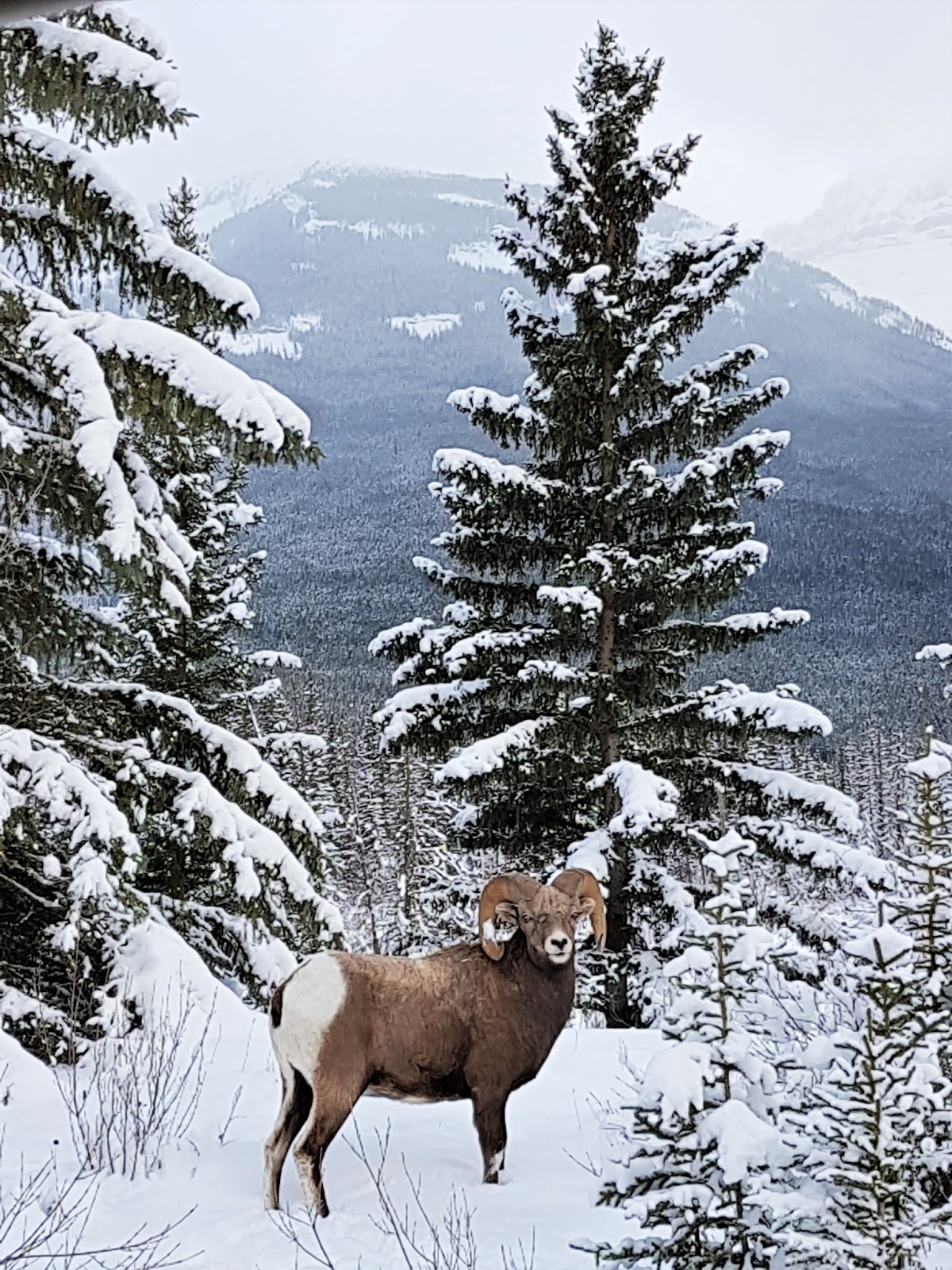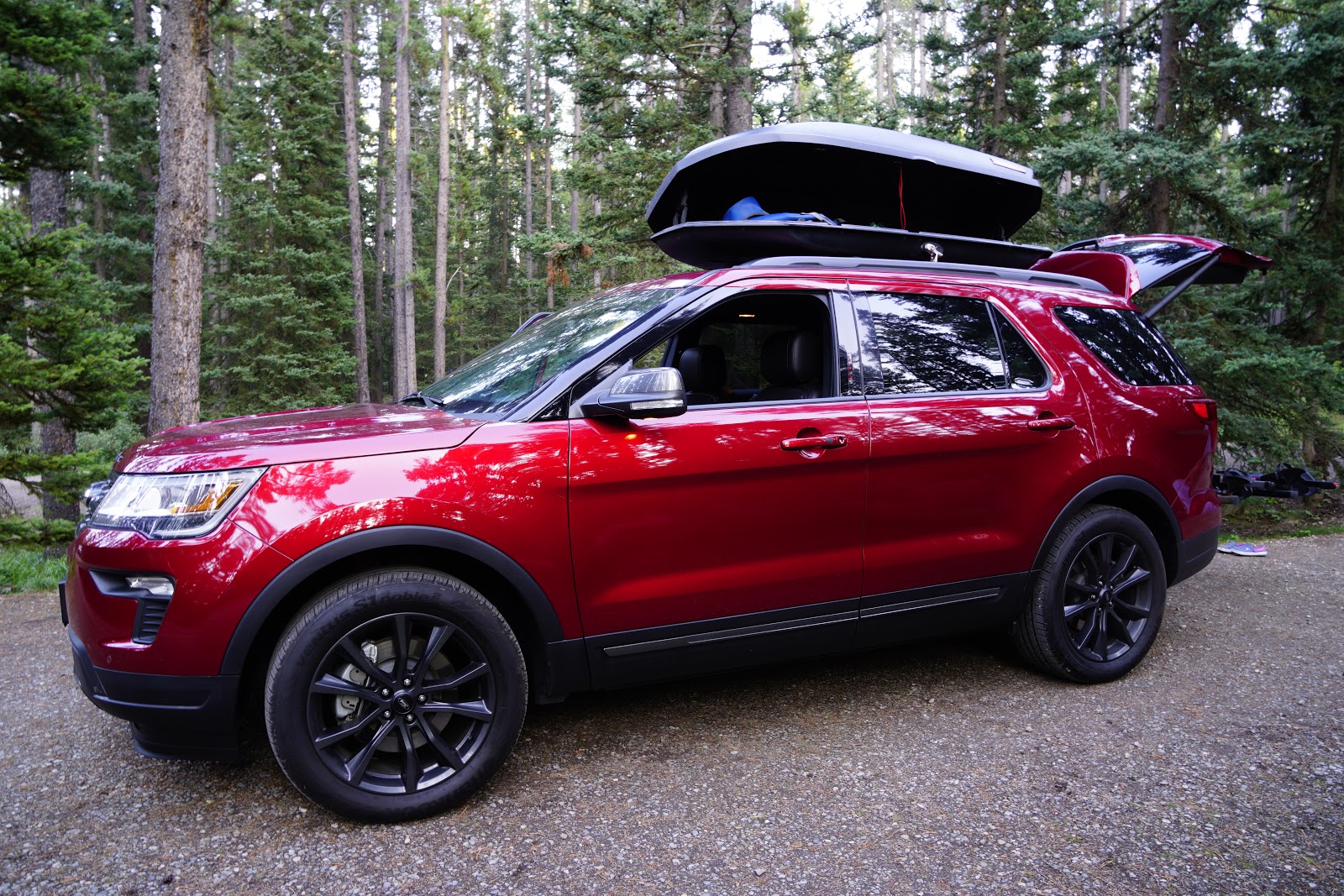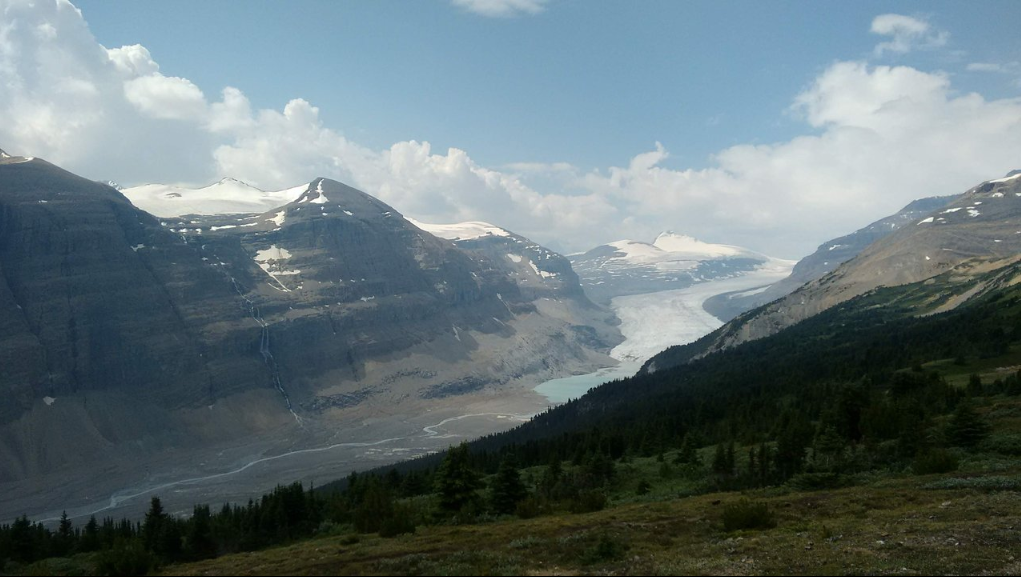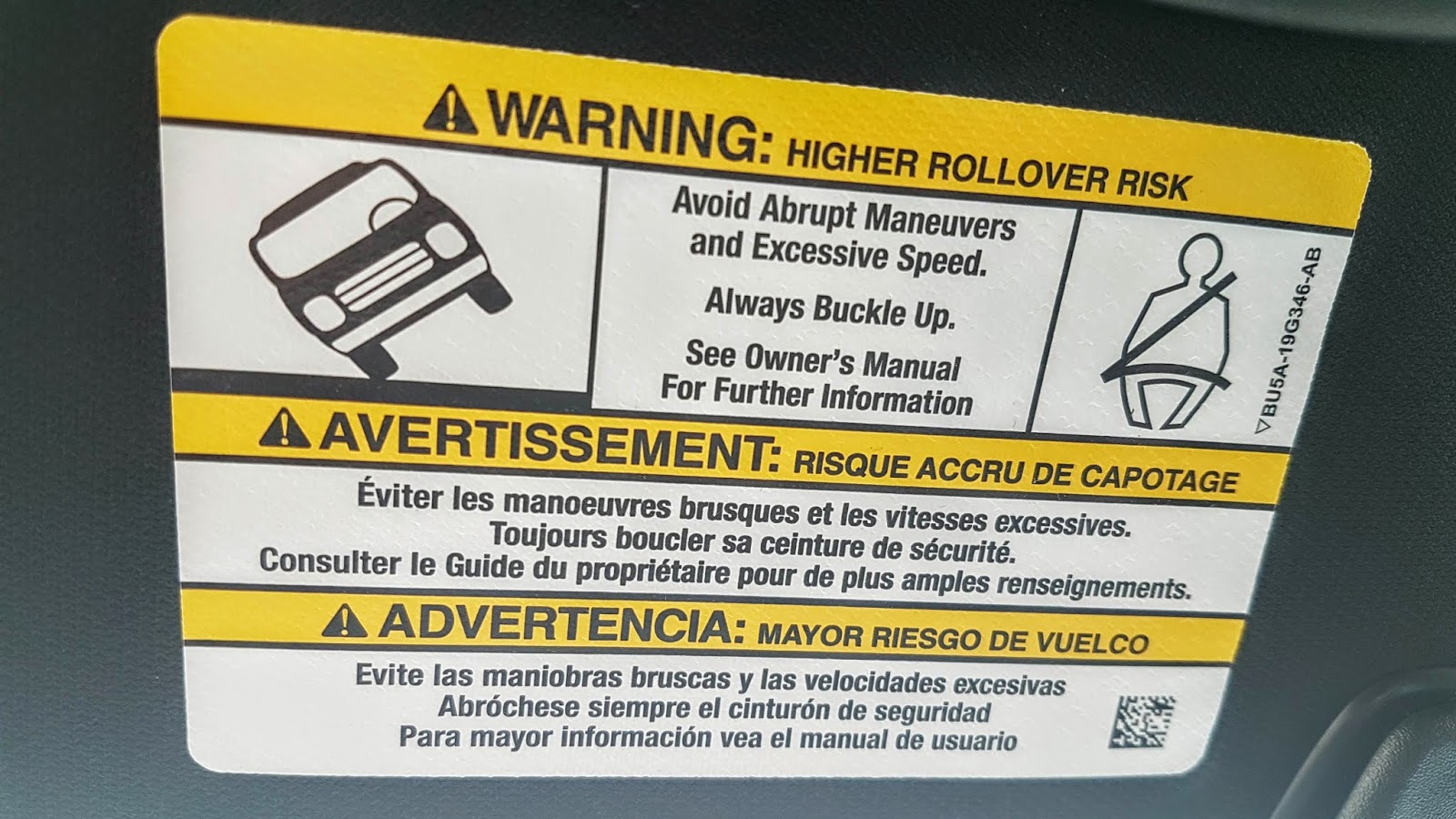Disclosure: Ford Canada generously loaned us a Ford Explorer for this road trip. All words and opinions are my own.
 |
| 2018 Ford Explorer XLT at Parker Ridge Trailhead, Banff |
Day 1: Johnston Canyon & Lake Louise Campground
Our spirits are as high as the girls’ voices as we get out on the highway. The kids are singing along with Taylor Swift (SiriusXM Radio for the win!), excited to go camping in Banff. It’s always fun driving to the mountains, but even more fun in a brand new vehicle!
As we leave Calgary city limits, I set the Ford Explorer’s variable cruise control (it automatically slows down when you approach slower vehicles, and resumes when you change lanes!) and ask my husband what hike he’d like to do. With our late start, we decide on Johnston Canyon. It’s beautiful, short, and en route to Lake Louise Campground so we can see both sets of falls before dinner.
Farmland gives way to foothills, and soon we’re in the mountains. We wind around Lac des Arcs, pass Canmore, zip through the Banff park gates (no waiting if you have a park pass!), then take the Bow Valley Parkway. The scenic route offers far more wildlife viewing opportunities. Deer and bighorn sheep are most commonly seen on this stretch of road, but if you’re lucky, you may spot a bear or elk.
 |
| A handsome bighorn sheep we saw on the Bow Valley Parkway in November 2017 |
Half a dozen songs later, we arrive at Johnston Canyon, named for a gold prospector who camped out here during the summer of 18851. Johnston never struck gold, but the canyon is one of Banff’s crown jewels. We come here year round for the catwalk, waterfalls, and tunnel and love how different it looks in every season. Interpretive signs describe how the canyon was formed over thousands of years as well as what animals and plants live here. At a moderate pace with lots of breaks, it takes us two hours to complete the 5.4 km round trip hike to Upper Falls.
- When to go to Johnston Canyon: To avoid the crowds, go midweek during peak season, or in the off season to see glittering ice falls (bring microspikes – the trail gets super icy).
After a treat from Castle Junction General Store, we get back on the Trans Canada Highway and make for camp. The Ford Explorer’s twin turbo 3.5 L V6 engine packs a lot of power – 360 horsepower – so we effortlessly pass slower vehicles, even on hills!
 |
| 2018 Ford Explorer at Lake Louise Campground, Banff National Park |
At Lake Louise Tent Campground we set up our home away from home. Although the campsites are little, close together, and near the train tracks (bring earplugs), we like this campground for its location. We are minutes from Lake Louise, a short walk or bike ride to shopping and dining, and you can even see Mount Temple from the shower building!
Read more about Johnston Canyon here: Exploring Johnston Canyon, Banff National Park.
Day 2: Exploring the Icefields Parkway
Stretching from Lake Louise to Jasper, the Icefields Parkway is one of Canada’s most spectacular drives – and our favorite. Every turn reveals new wonders: glaciers, turquoise lakes, jagged peaks, or waterfalls. It’s hard to believe this mountain road was built mostly by hand (to employ as many people as possible) during the Great Depression.2 Since then, the Icefields Parkway has been made into a two-lane highway, and paved, but remains a vast wilderness area with little commercial development.
 |
| Peyto Lake, Banff National Park |
We pass beautiful Bow Lake, Peyto Lake, and Mistaya Canyon, finally stopping at a picnic area near Saskatchewan Crossing. With tons of space in the back of the Ford Explorer (43.9 cubic feet with 3rd row of seats folded down), we have everything we need to cook a hearty lunch. After a big bowl of ramen, we walk to the lookout over the North Saskatchewan River to stretch our legs, then continue to Parker Ridge.
- Read Touring the Icefields Parkway with Kids for more information on the best short hikes and viewpoints!
Parker Ridge is a scenic, moderately strenuous hike located 9 kilometres south of the Icefield Centre. In only 2.7 kilometres, you gain 250 metres of elevation and are rewarded with spectacular views of the Saskatchewan Glacier. The glacier is one of six that make up the Columbia Icefield, the largest icefield in the Rockies (325 square kilometres!3). It’s also the longest glacier in the Canadian Rockies!
 |
| Parker Ridge Trail, Banff |
The trail through the Engelmann spruce and fir trees is lined with wildflowers. Soon we leave them behind and see the slope scattered with natural bonsai (krummholz – German for “crooked wood”). As the trail gets steeper, it begins to switchback across the slope. It’s much easier going on the switchbacks (for us and the alpine plants), so we resist the temptation to take shortcuts.
 |
| View from the top of Parker Ridge Image Credit: Lawrence S from the UK |
At the big cairn, you can go left for a few minutes to a stunning Saskatchewan Glacier viewpoint, or right – on an unofficial trail – for a birds’ eye view of the area. It’s about one kilometre to the top and well worth it (on a clear day especially, it was smoky when we went). We hang out for half an hour watching ravens ride the thermals, then return the way we came.
 |
| Dual DVD screens are available in the 2018 Ford Explorer XLT |
Back at the car, the girls pop DVDs in for the 1.5 hour drive back to camp. With dual DVD screens in our Ford Explorer, there’s no fighting over what to watch! As the girls giggle in the backseat, my husband and I take in the scenery and keep an eye out for a good sunset spot. We pull over at Waterfowl Lakes for a quick photo before the color fades to blue.
 |
| 2018 Ford Explorer at Waterfowl Lakes, Banff |
Over the next two days, we hike to Castle Mountain Lookout, bike Golf Course Road in Banff, stand-up paddleboard at Johnson Lake, and mountain bike at the Canmore Nordic Centre (on the way home). Our Ford Explorer handles well on the winding mountain roads and is comfortable and roomy too! We’re sorry to say goodbye to it at the end of our journey.
2018 Ford Explorer At a Glance
The 2018 Ford Explorer is a powerful and attractive full-sized SUV with three rows of seating. In the 8th model year of its 5th generation, the 2018 Ford Explorer remains one of the most popular SUVs in its class due to its size (perfect for families), power (360 horsepower, 3.5 L twin turbo V6 engine), price (good value for what you pay, great infotainment system and available safety features), and good looks.
Model Tested
We tested a 2018 Ford Explorer XLT 4WD with the following available add-ons: Safe and Smart package (lane departure and lane keeping system, adaptive cruise control, collision warning, blind spot monitoring system, rain sensing wipers, auto high beam headlamps), power liftgate, moonroof, roofrack, and trailer towing package.
Under the Hood
The Ford Explorer boasts a powerful 3.5 litre V-6 TIVCT engine with 290 horsepower and 255 lb-ft of torque. We found acceleration to be good, even when the vehicle was loaded with 4 passengers, camping gear, a hitch mounted bike rack with 4 bikes, and roofbox full of gear.
Driving Experience
Over 10 days, we put almost 2,000 kilometres on the 2018 Ford Explorer. We enjoyed having good passing power and acceleration and found the 6-speed transmission to be pretty smooth. Since we tested the vehicle in the summer, we didn’t test the Terrain Management System (with settings for mud, sand, gravel, grass or snow), but found the 4WD worked well on steep gravel roads.
 |
| Ford Explorer Terrain Management System dial |
Handling was better than expected despite the scary rollover risk warning on the visor. While you need to take it easy on tight turns (don’t go too fast!), the AdvanceTrac electronic stability system with Curve and Roll Stability Control is very responsive and makes roads with gentle turns a lot of fun.
 |
| Higher rollover risk common to full size SUVs |
The lane keeping system is also quite sensitive depending on the settings you use. I ended up turning it off as it was a bit unsettling feeling the car steer me, especially in construction zones where the lines aren’t where they should be.
My favorite feature for highway driving was the adaptive cruise control. You just set it and forget it. The vehicle automatically slows down when you catch up to a slow car, then speeds up when you change lanes. It’s easy to turn it off by tapping the brake.
Interior
The leather/suede interior of the Ford Explorer XLT is attractive and comfortable. Since the Explorer is two sizes bigger than the Ford Escape (see our detailed review here), we enjoyed lots of elbow and leg room. Getting out of the third row is better if you’re a kid. Since we only have two kids, we folded the third row down for 43.9 cubic feet of cargo space. This provided plenty of space for day trips for our family of four, or a huge Costco run with room to spare, but we still needed the roofbox to accommodate all our camping gear. If you have a trailer, know that the Ford Explorer can tow 5,000 pounds (you’ll just need to install a hitch).
 |
| 2018 Ford Explorer infotainment system |
Sync your phone to the infotainment centre and go hands free. If you need to change settings or zoom in on a map, the 8-inch screen is a touchscreen with pinch to zoom capabilities.
Exterior
 |
| 2018 Ford Explorer XLT grille |
Verdict
For more information
Please visit Ford Canada – 2018 Ford Explorer for complete specs and pricing.
To learn more about the #playoutsideride project, please read Help Us Choose Our Next Adventure Car aka #PlayOutsideRide.
References







